
Mid-season flu activity increase: How to keep healthy
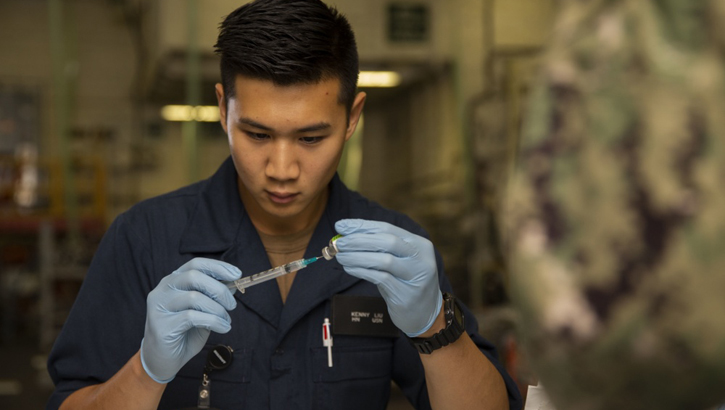
Navy Hospital Corpsman Kenny Liu, from San Jose, assigned to USS Gerald R. Ford's medical department, prepares a needle with a flu vaccination in the ship's hangar bay. (U.S. Navy photo by Mass Communication Specialist Seaman Apprentice Angel Thuy Jaskuloski)
Influenza can affect anyone, from the everyday civilian to the active-duty service member. Current trends show an increase in flu activity at the halfway point of the season. While it’s too early in the season to determine the overall severity of the flu, the Military Health System maintains readiness and resourcefulness to protect the armed forces and their loved ones from effects of the flu.
The U.S. Centers for Disease Control and Prevention (CDC) has found an elevated level of influenza activity earlier in the season than is typically observed around this time. As of Jan. 16, the CDC estimates that there have been approximately 4,800 flu-related deaths and 87,000 hospitalizations nationwide this season. Active surveillance by the Defense Health Agency’s Armed Forces Health Surveillance Division (AFHSD) has also found high levels of influenza activity among military personnel.
Despite the increase in activity, MHS is prepared to sustain the health of service members and their families. All military personnel are required to be immunized against the flu annually to decrease susceptibility to infection.
“Immunization is important given that military personnel live and work in close proximity with other members of the community,” said Navy Cmdr. Shawn Clausen of AFHSD’s Epidemiology and Analysis section.
While involvement in patient-care activities and participation in large gatherings increases the risk of infection, early data and discussions with the CDC show that the risk among military members and the general population appears to be similar. To get ahead of this risk, the Department of Defense has already distributed more than 3.3 million doses of influenza vaccine throughout the military. As of Jan. 16, approximately 90 percent of all service members have been vaccinated.
Vaccination is recommended not just for military members, but also their loved ones, according to Janet Brunader, a research nurse in the Vaccine Safety & Evaluation section of the Defense Health Agency’s Immunization Healthcare Division.
“The good news is that although seasonal influenza vaccine is not always a perfect match, it is still the best way to provide protection against influenza disease,” she said. Brunader suggests that everyone 6 months or older get a flu shot each year in the fall. Children over 6 months of age but under age 8 years who have never had a flu shot should get two shots – one shot followed by another at least four weeks later. Children who have had at least one flu shot in the past only need to get one flu shot each year.
There are numerous ways in addition to vaccination to keep safe against the flu.
“One helpful suggestion, in addition to washing your hands before eating or handling food, is to avoid touching your eyes, nose, or face with your unwashed hands,” Brunader said. “This will help prevent spreading germs from surfaces to your eyes, nose, or mouth.”
Since flu viruses can also spread through the air, Brunader suggests staying at least six feet away from people who are coughing, sneezing, or blowing their nose. If you already have the flu, coughing into a tissue or the bend of the elbow will reduce the spread of viruses. Those suspecting they have the flu should contact a health care provider within two days of the symptoms. Early treatment with anti-influenza drugs can shorten the duration of illness.
Beneficiaries can receive flu vaccines through their closest military hospital and retail networks. TRICARE representatives can help determine how to get the vaccine if a person is unable to visit a military hospital. MHS also has an archive of influenza resources for beneficiaries to learn more about the flu and what they need to do to keep safe during the season.
Among the four types of flu, influenza A and B are the main two strains that cause “flu season.” AFHSD has paid close attention to both of these strains this year.
“As reflected in the U.S. among civilian populations [this season], the majority of laboratory-confirmed influenza-positive specimens continued to be influenza subtype B [Victoria lineage],” said Navy Cmdr. Mark Scheckelhoff from AFHSD’s Global Emerging Infections Surveillance section. "In recent weeks, the incidence of influenza A, specifically A(H1N1)pdm09, has increased steadily and appears that it will soon become the most predominant strain.”
According to early data from AFHSD, most of the U.S. is experiencing at least “moderate” levels of flu and flu-like activity, with the exception of a few states. Globally, temperate areas of Europe are also observing increased incidences of the flu, with areas of Central and Western Africa continuing to have elevated activity as well. Most of South and Central America and most areas of South and Southeast Asia are reporting “low” levels of activity, but the World Health Organization characterizes other areas of Asia as either “elevated” or “increasing.”
To monitor progression of the flu through the season, AFHSD produces a tri-service consolidated influenza report weekly to reflect data from military hospitals. The CDC also produces a more holistic view on how influenza is affecting the rest of the country.
Sorry flu, not this year
Article
1/27/2020
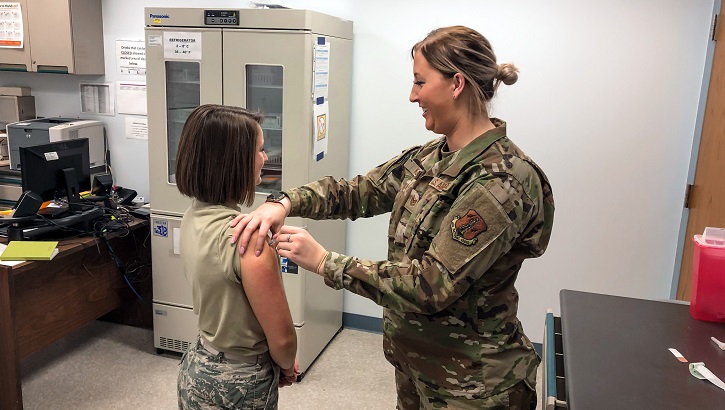
The Defense Logistics Agency Troop Support Medical supply chain teamed with Department of Defense partners to provide 3.4 million doses of the influenza vaccine to service members, dependents and retirees.
DTRA contributes to historic Ebola vaccine effort
Article
1/17/2020

U.S. Food and Drug Administration approves new Ebola vaccine
HPV vaccine now recommended for those up to age 45
Article
1/14/2020

HPV shot protects against a host of diseases in men, women
U.S. Transportation Command: DoD’s manager for global patient movement
Article
1/9/2020
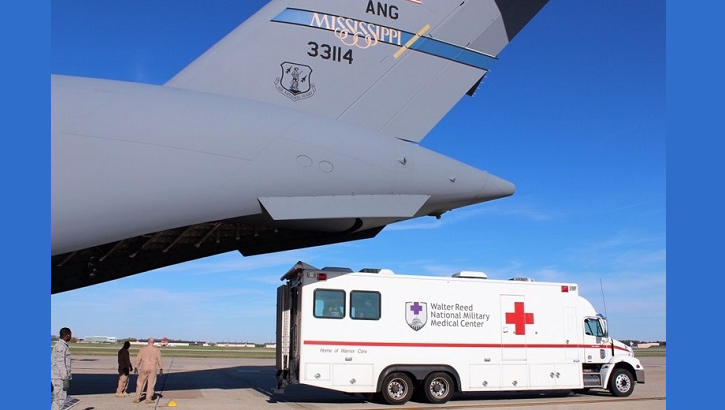
On a weekly basis, USTRANSCOM moves up to 40 patients from overseas to CONUS
Joint Chiefs say mind, body, spirit all part of Total Force Fitness
Article
1/7/2020

2020 focus on factors making service members, families “resilient”
Navy Medicine demonstrates Virtual Health options to Africa
Article
1/6/2020
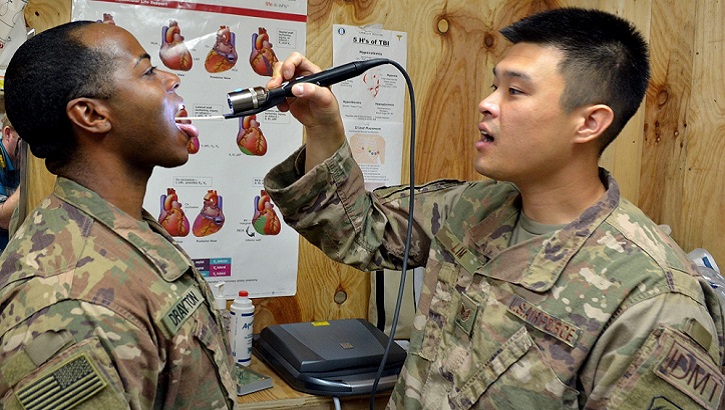
Djibouti hosts the largest U.S. American military base on the African continent
Armed Forces Reportable Medical Events Guidelines and Case Definitions Memo
Policy
The Armed Forces Reportable Medical Events Guidelines and Case Definitions (RME Guidelines) standardize reporting and tracking of disease and other conditions of public health and military importance. Timely reporting permits earlier recognition of public health events and interventions to protect the health of the force.
- Identification #: N/A
- Date: 1/1/2020
- Type: Memorandums
- Topics: Armed Forces Health Surveillance Branch
Armed Forces Reportable Medical Events Guidelines and Case Definitions
Publication
1/1/2020
A reportable event may represent an inherent, significant threat to public health and military operation. These events have the potential to affect large numbers of people, to be widely transmitted within a population, to have severe/life threatening clinical manifestations, and to disrupt military training and deployment. Timely, accurate reporting of probable, suspected or confirmed cases ensures proper identification, treatment, control, and follow-up of cases.
MSMR Vol. 27 No. 1 - January 2020
Report
1/1/2020
A monthly publication of the Armed Forces Health Surveillance Branch. This issue of the peer-reviewed journal contains the following articles: Carbon Monoxide Poisoning, Active and Reserve Component Service Members and Non-Service Member Beneficiaries of the Military Health System, U.S. Armed Forces, July 2009–June 2019; Respiratory Pathogen Surveillance Trends and Influenza Vaccine Effectiveness Estimates for the 2018–2019 Season Among Department of Defense Beneficiaries; Brief Report: The Early Impact of the MHS GENESIS Electronic Health Record System on the Capture of Healthcare Data for the Defense Medical Surveillance System; and Brief Report: Incidence and Prevalence of Idiopathic Corneal Ectasias, Active Component, 2001–2018.
Air Force studies fatigue, sleep to enhance readiness
Article
12/31/2019
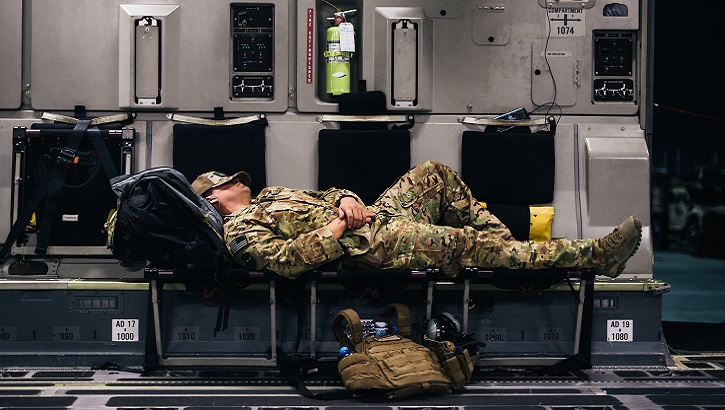
Good sleep habits are closely related to overall health and performance
Guard and Reserve crucial to CCATT expansion
Article
12/20/2019
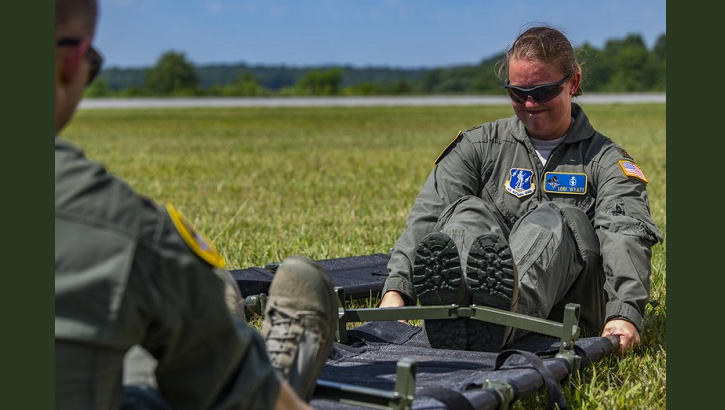
The Guard and Reserve support the bulk of aeromedical evacuation, CCATT capabilities
Air Force, Army medics save groom
Article
12/19/2019
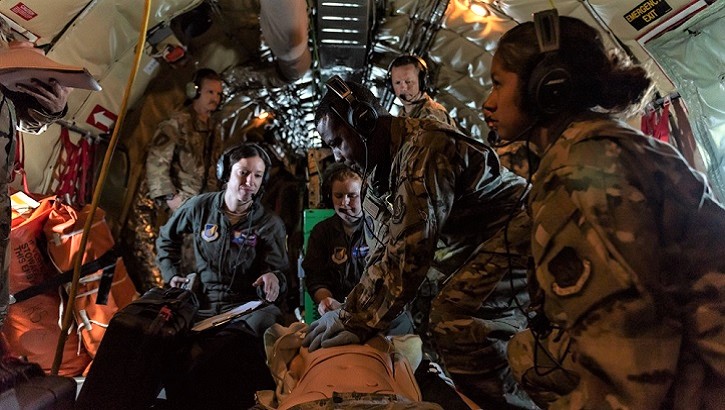
NCO’s first aeromedical evacuation mission was definitely challenging
McCaffery AMSUS Remarks 2019
Publication
12/5/2019
McCaffery statements made during the 2019 annual meeting of AMSUS
McCaffery calls for military medical strategic framework for warfighting readiness
Article
12/5/2019

'New reality' includes tight synchronization, expanding partnerships
World AIDS Day puts spotlight on landmark DoD study
Article
12/2/2019
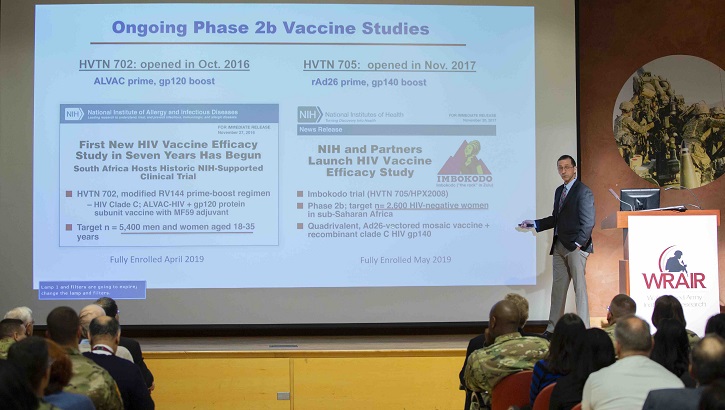
Vaccine study shows infection risk lowered by 31 percent, offering hope for future





















.png)









No hay comentarios:
Publicar un comentario